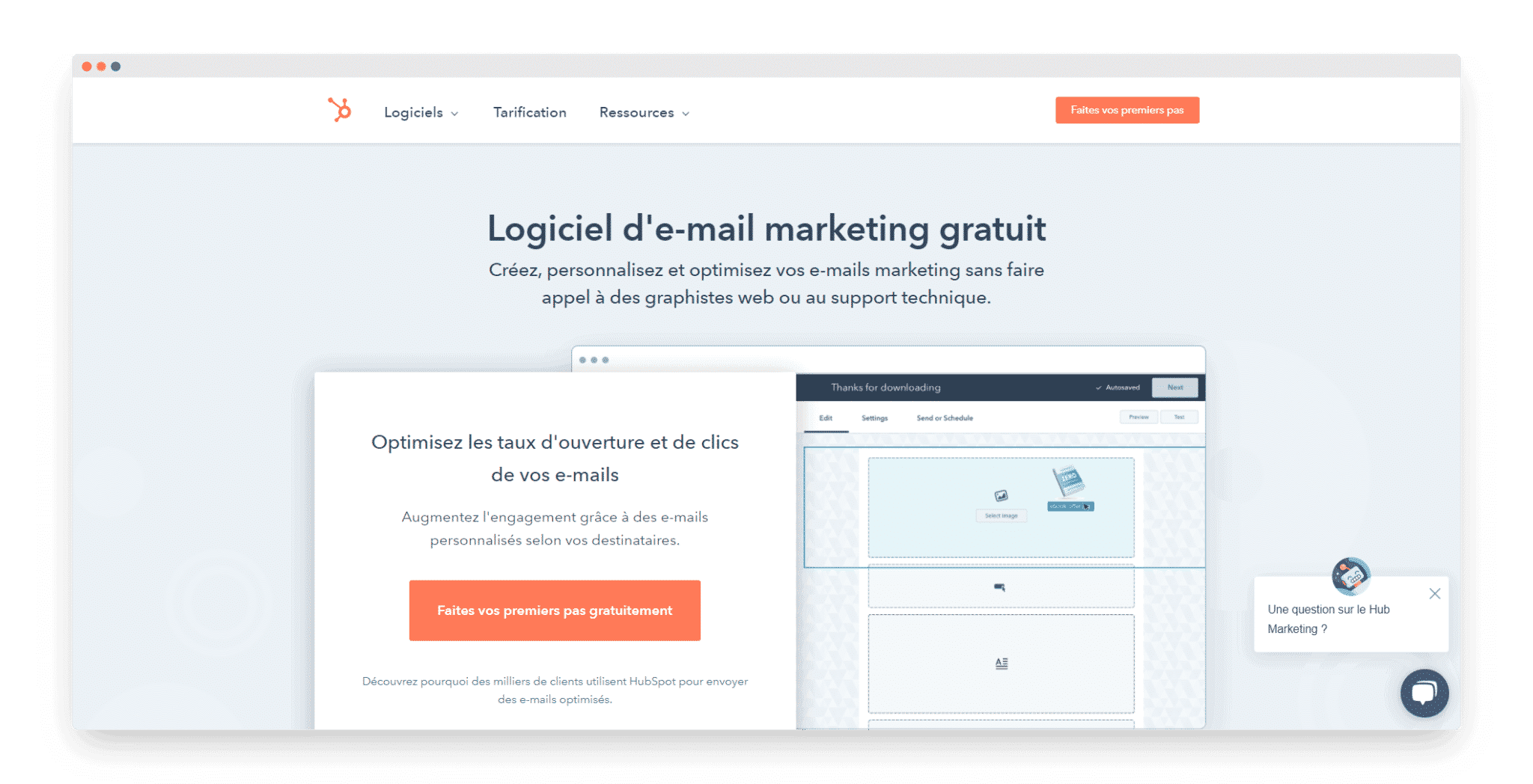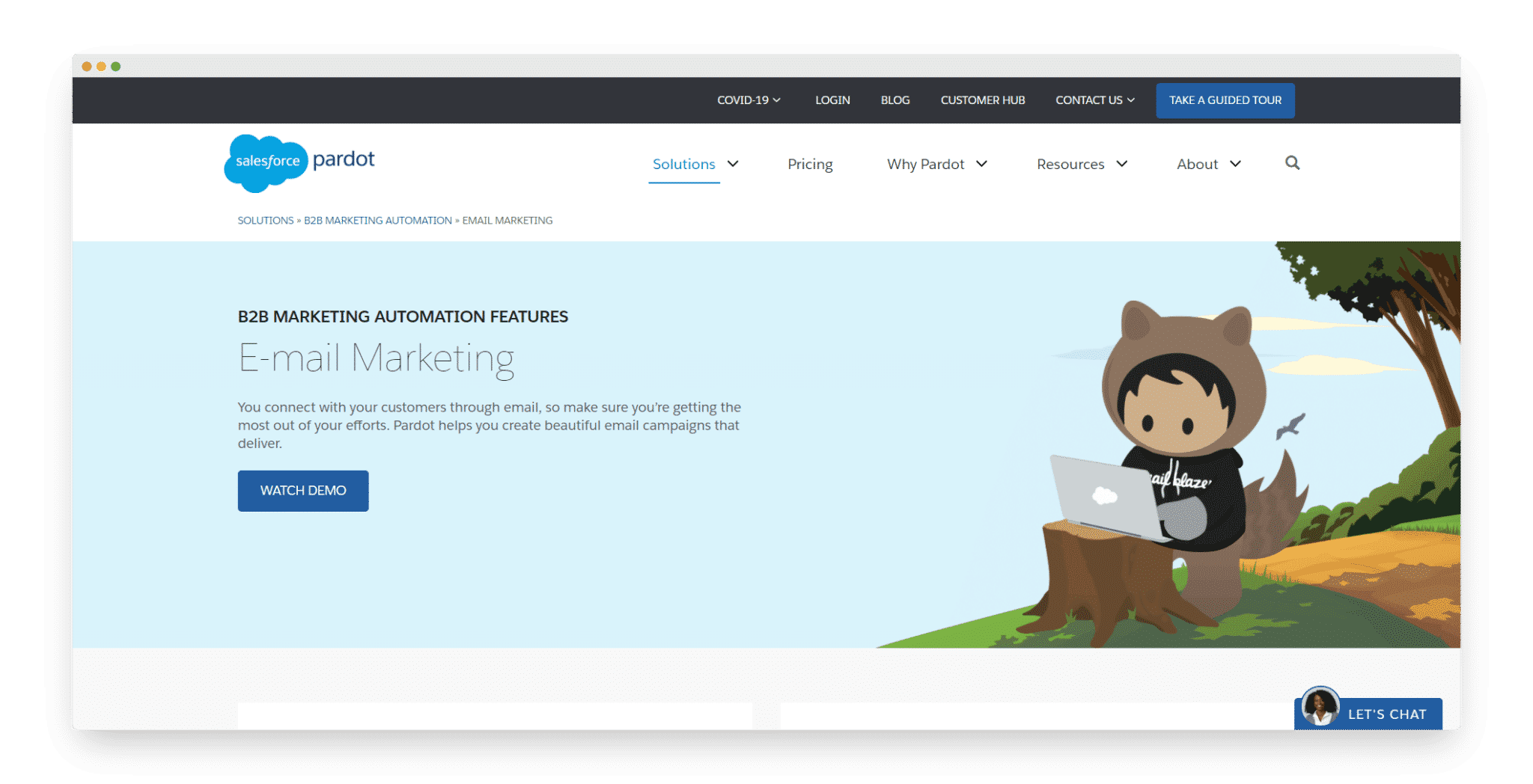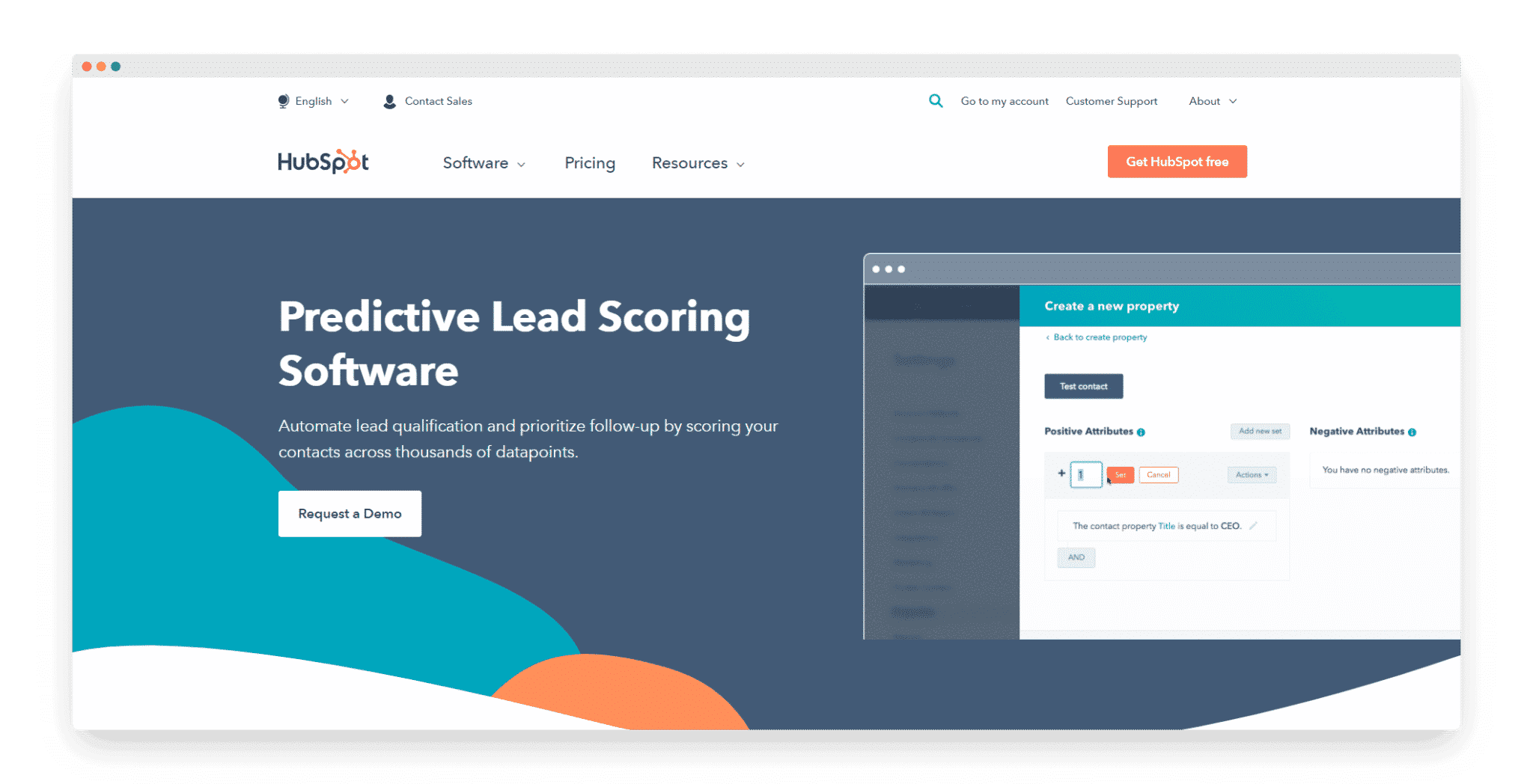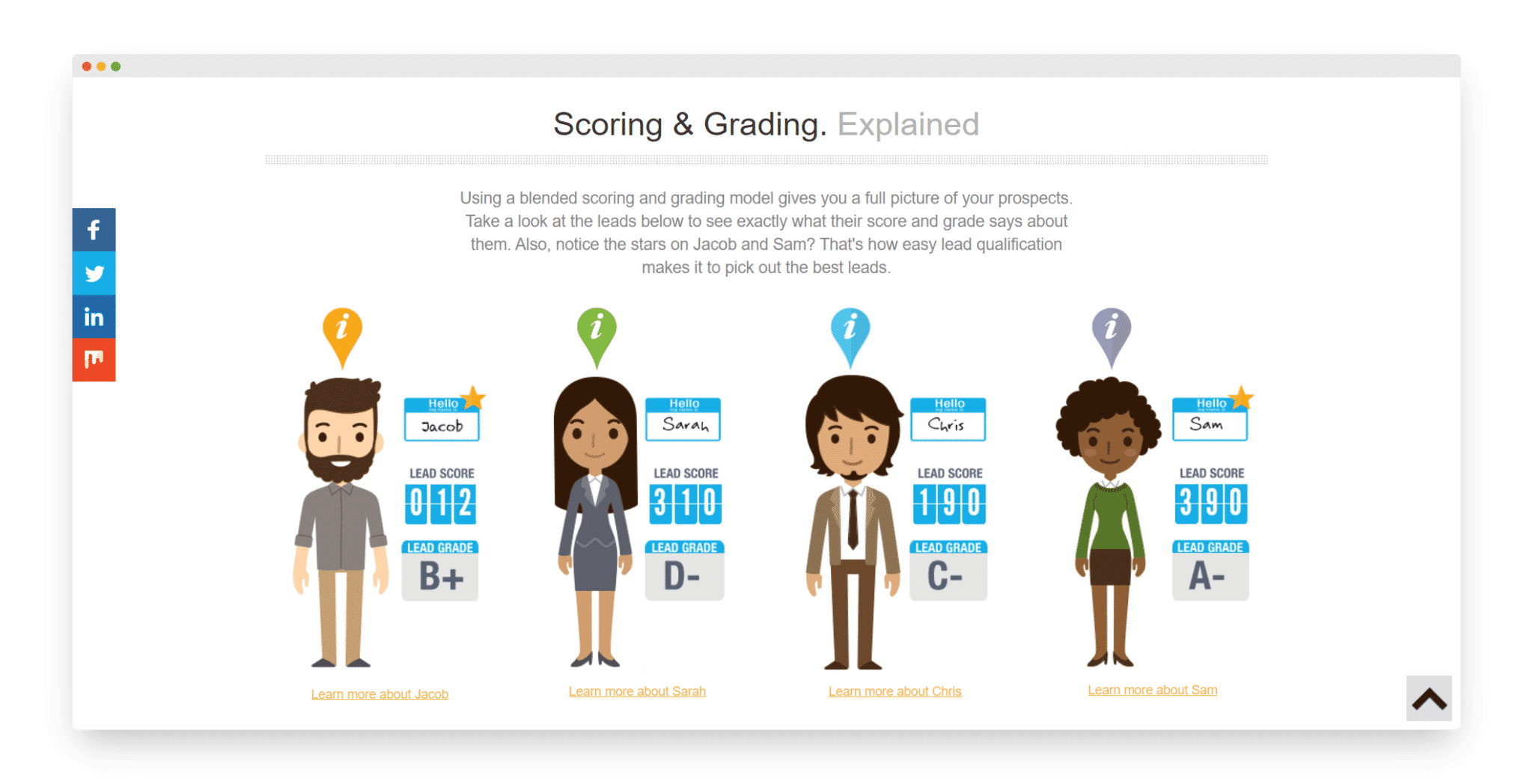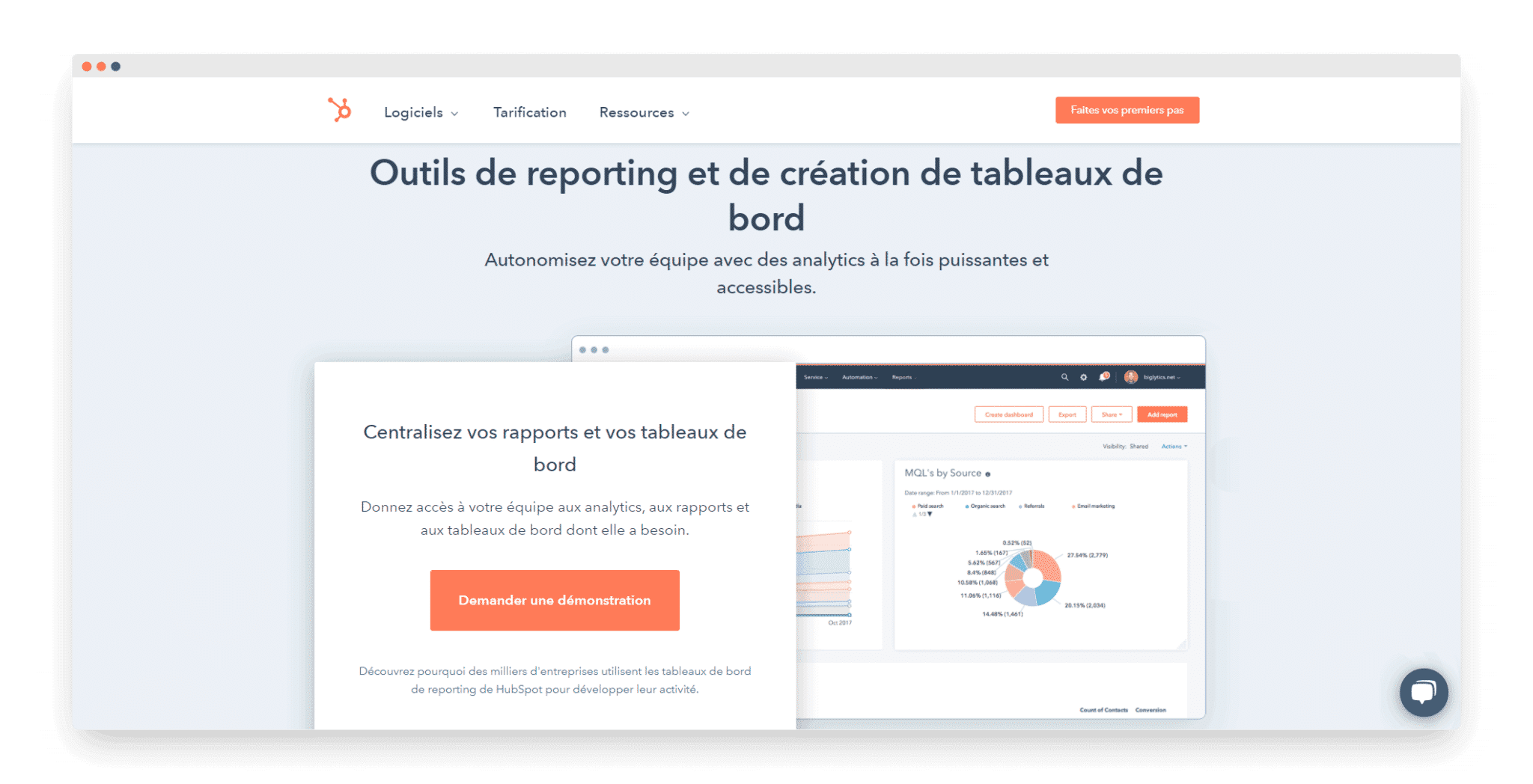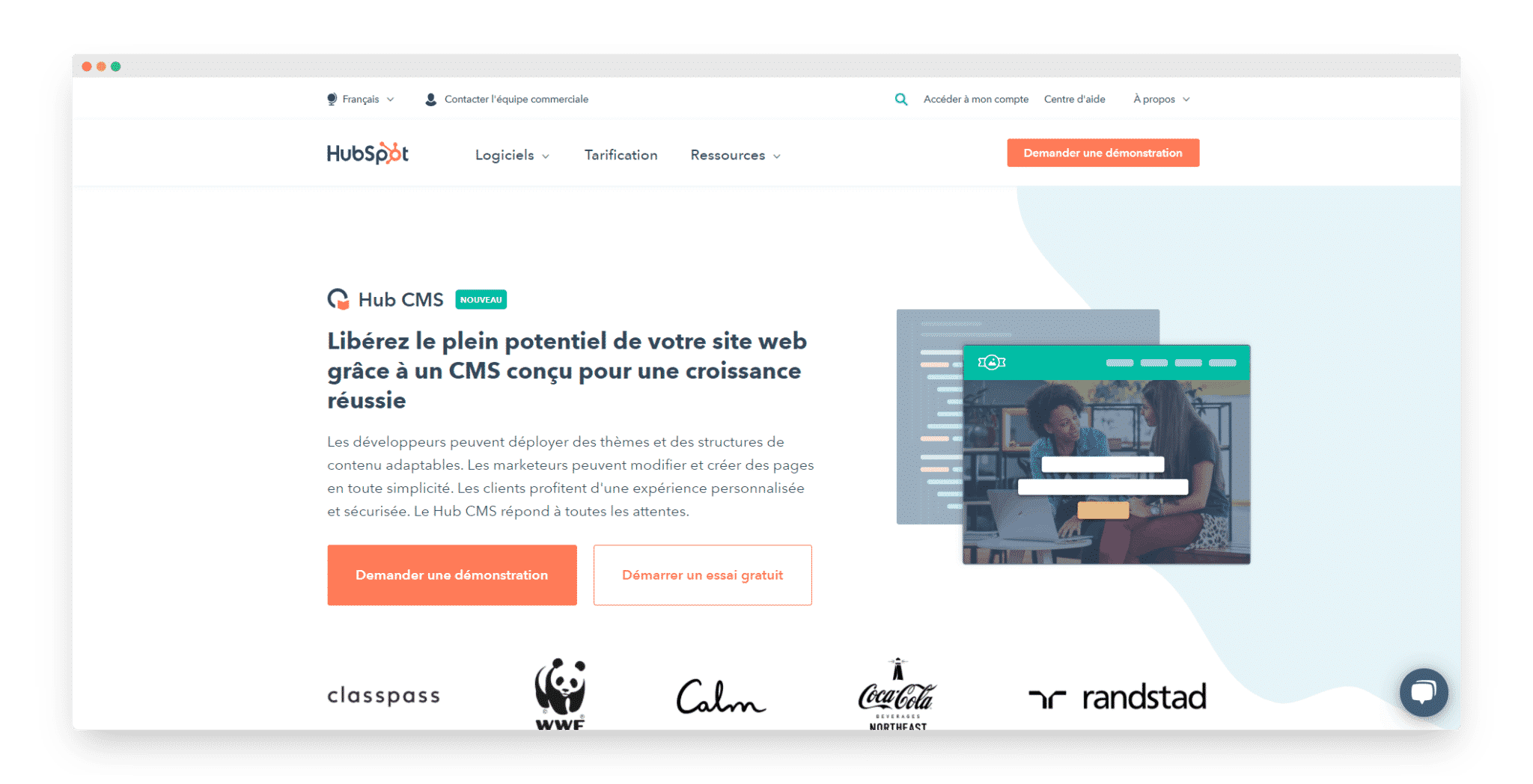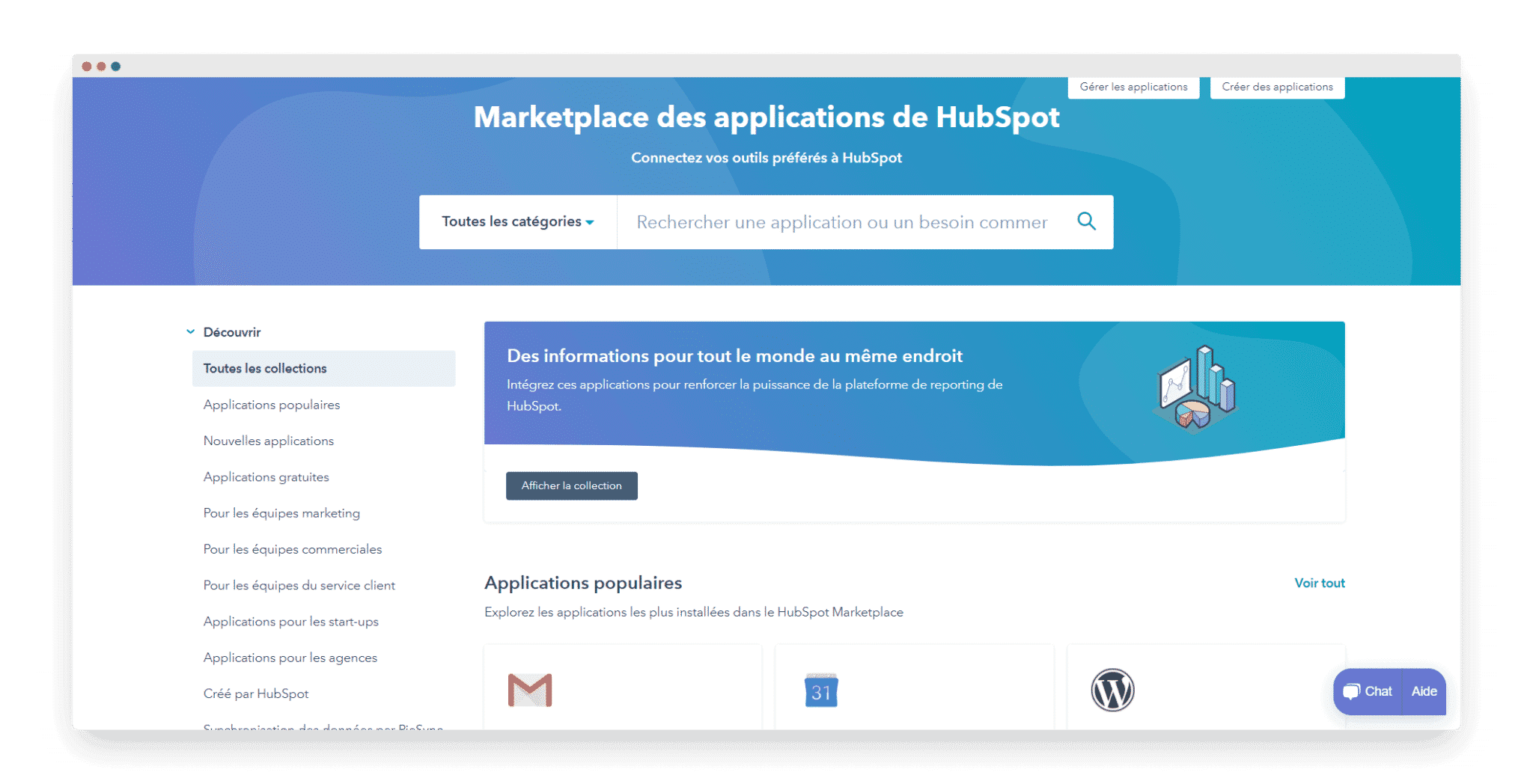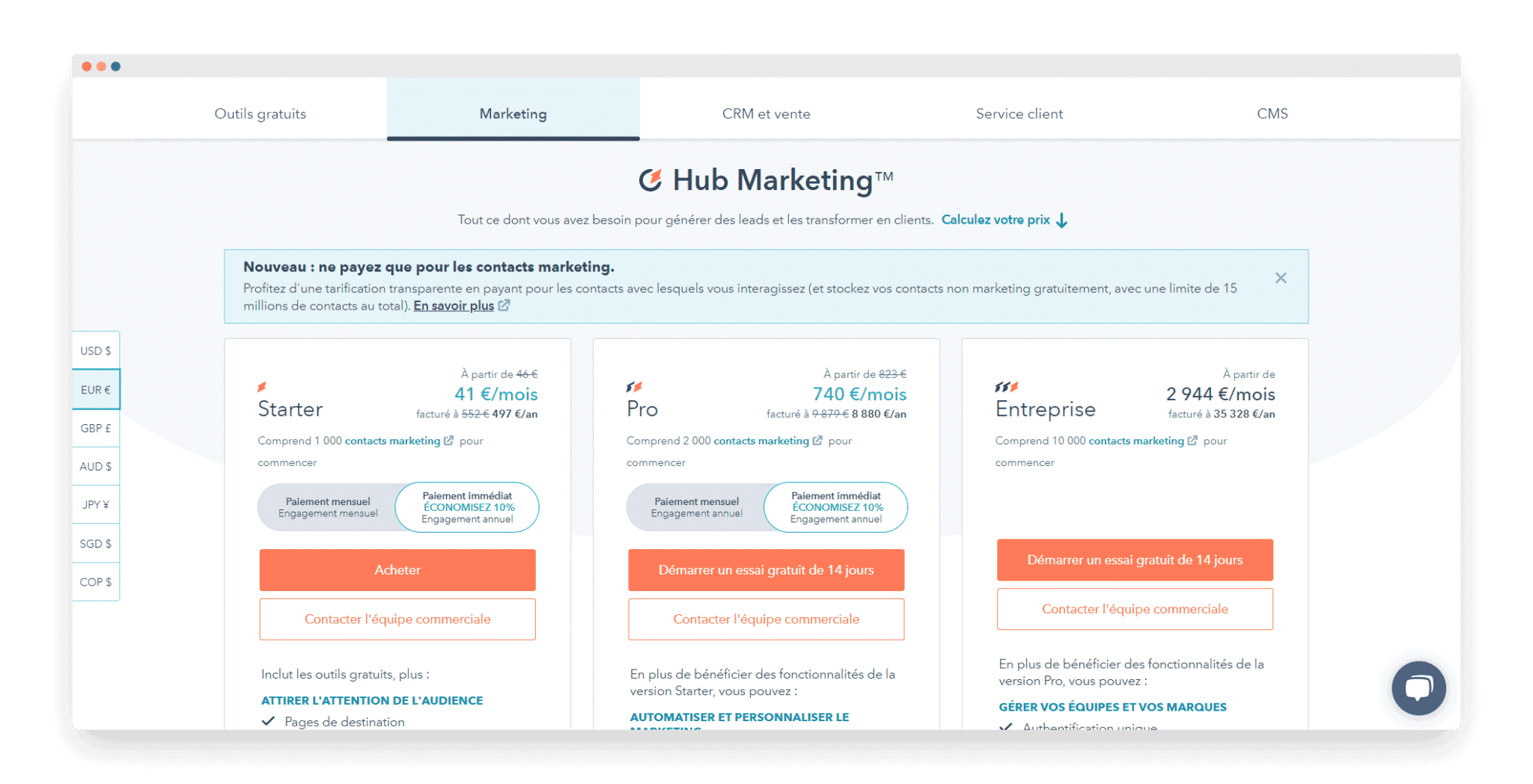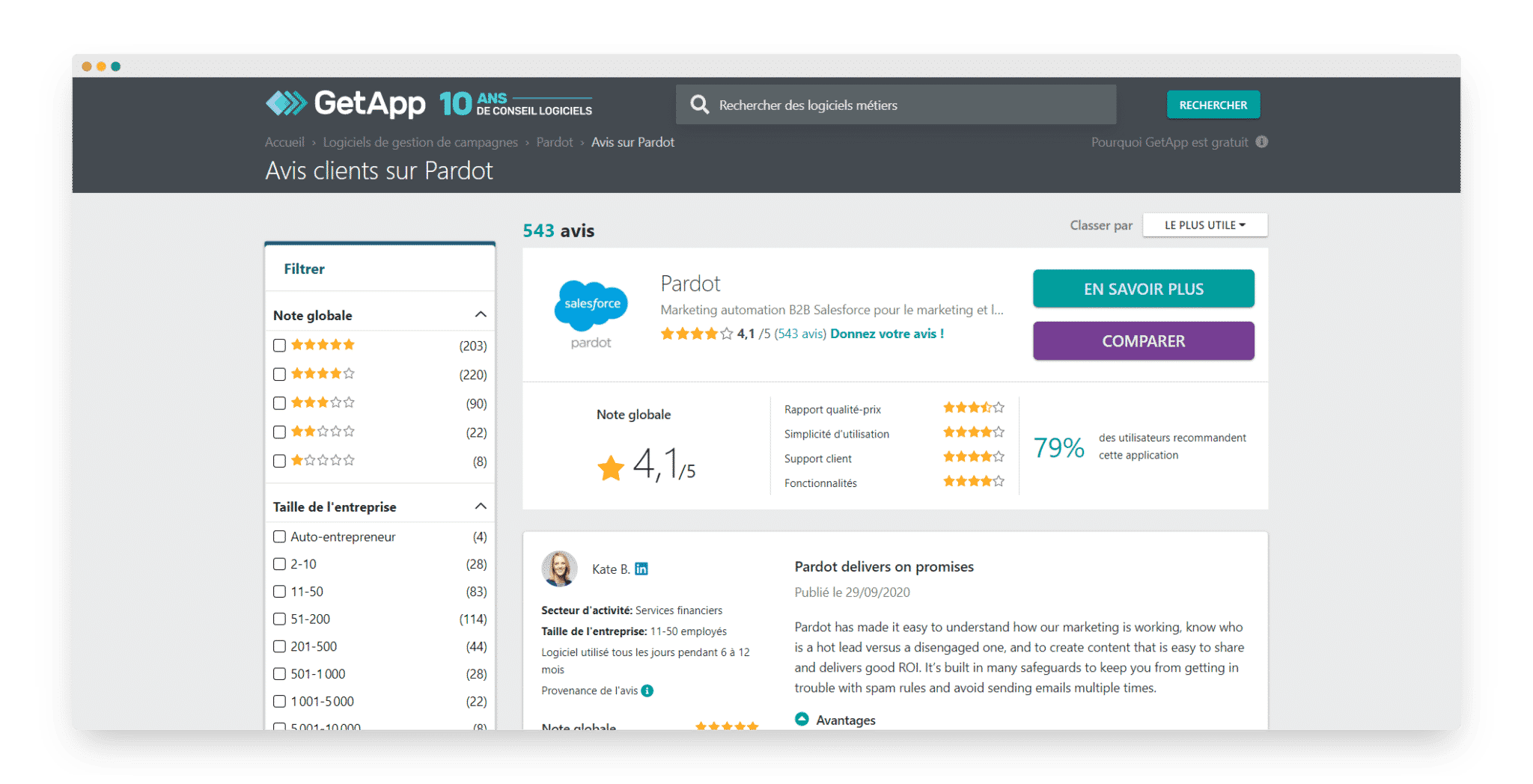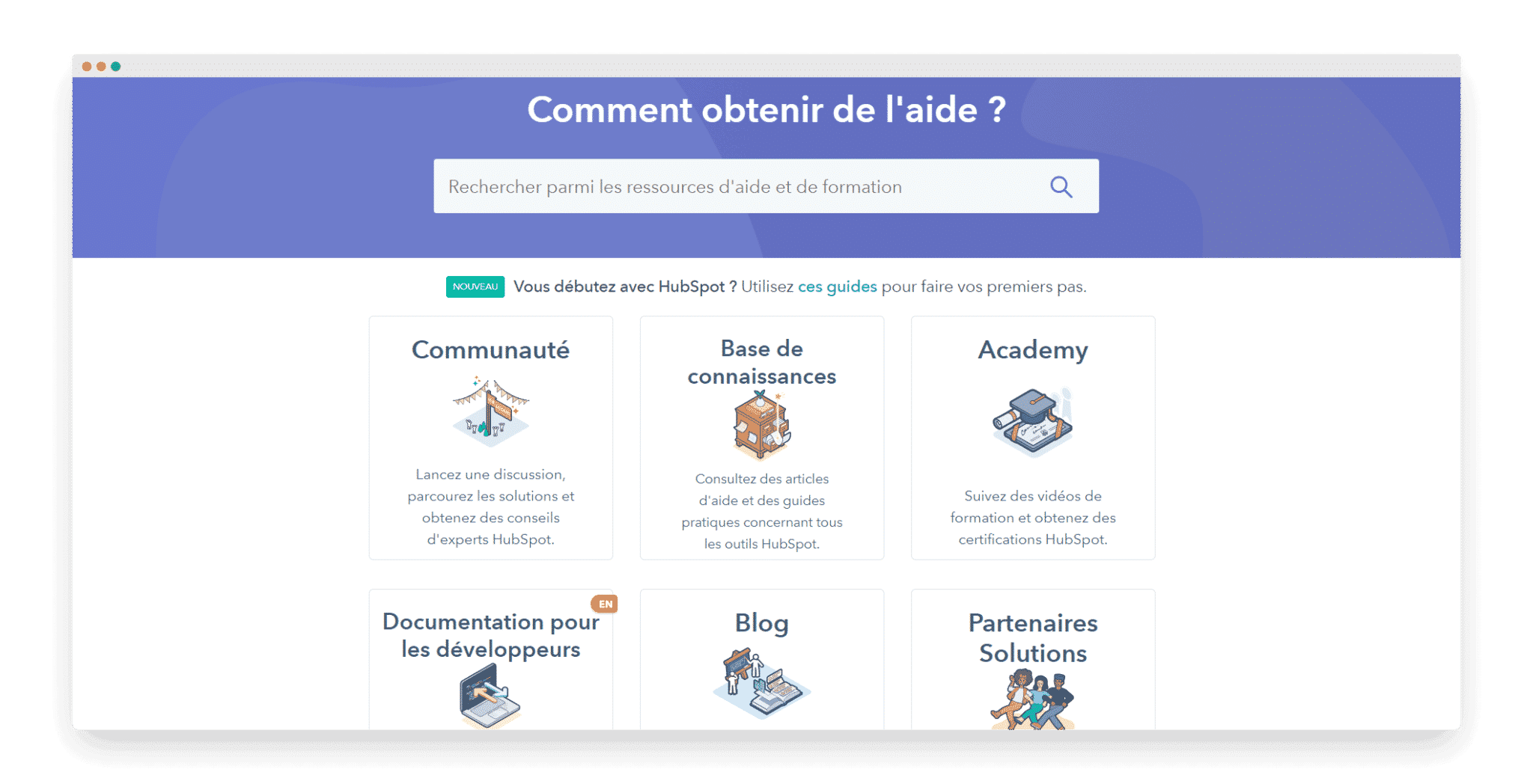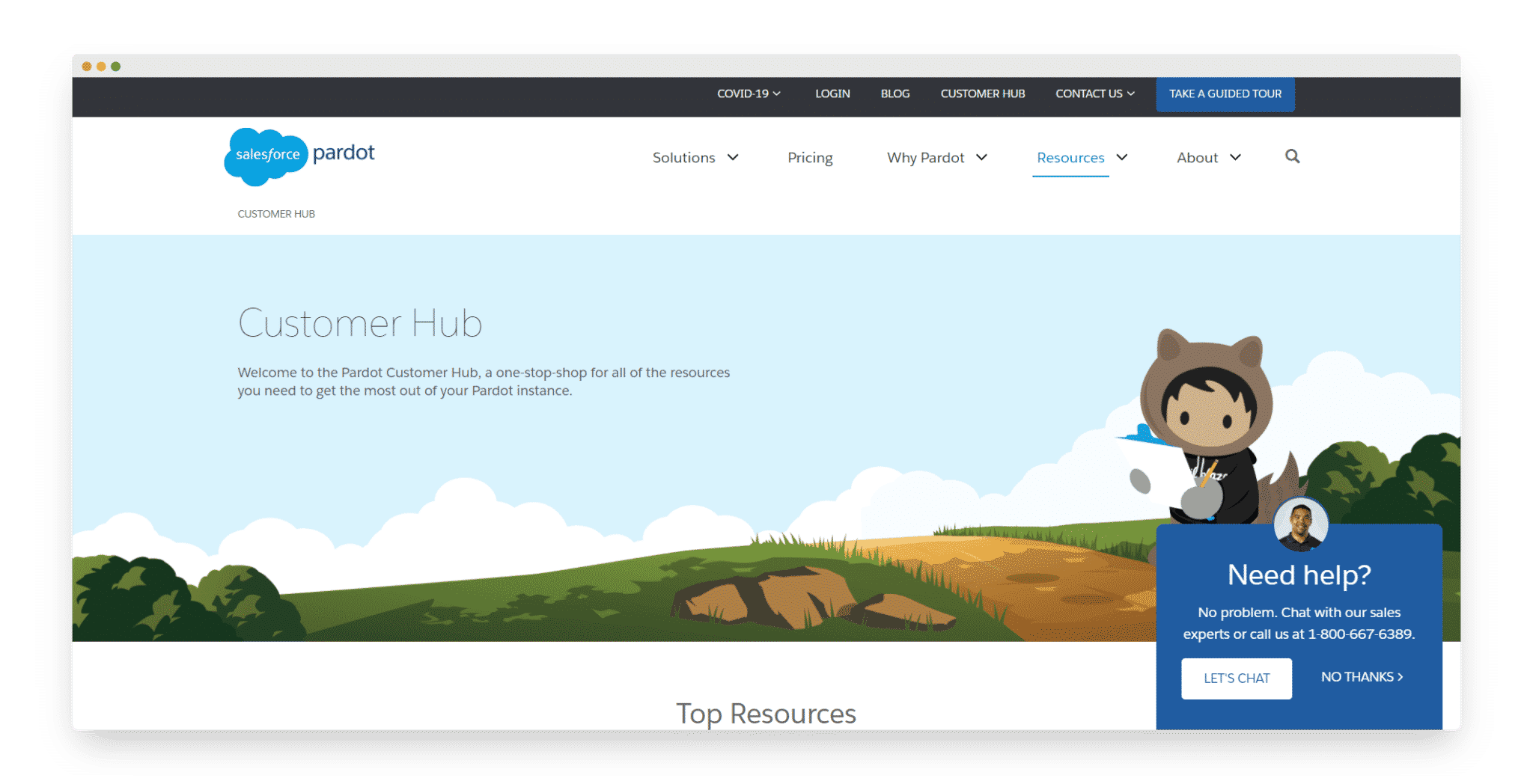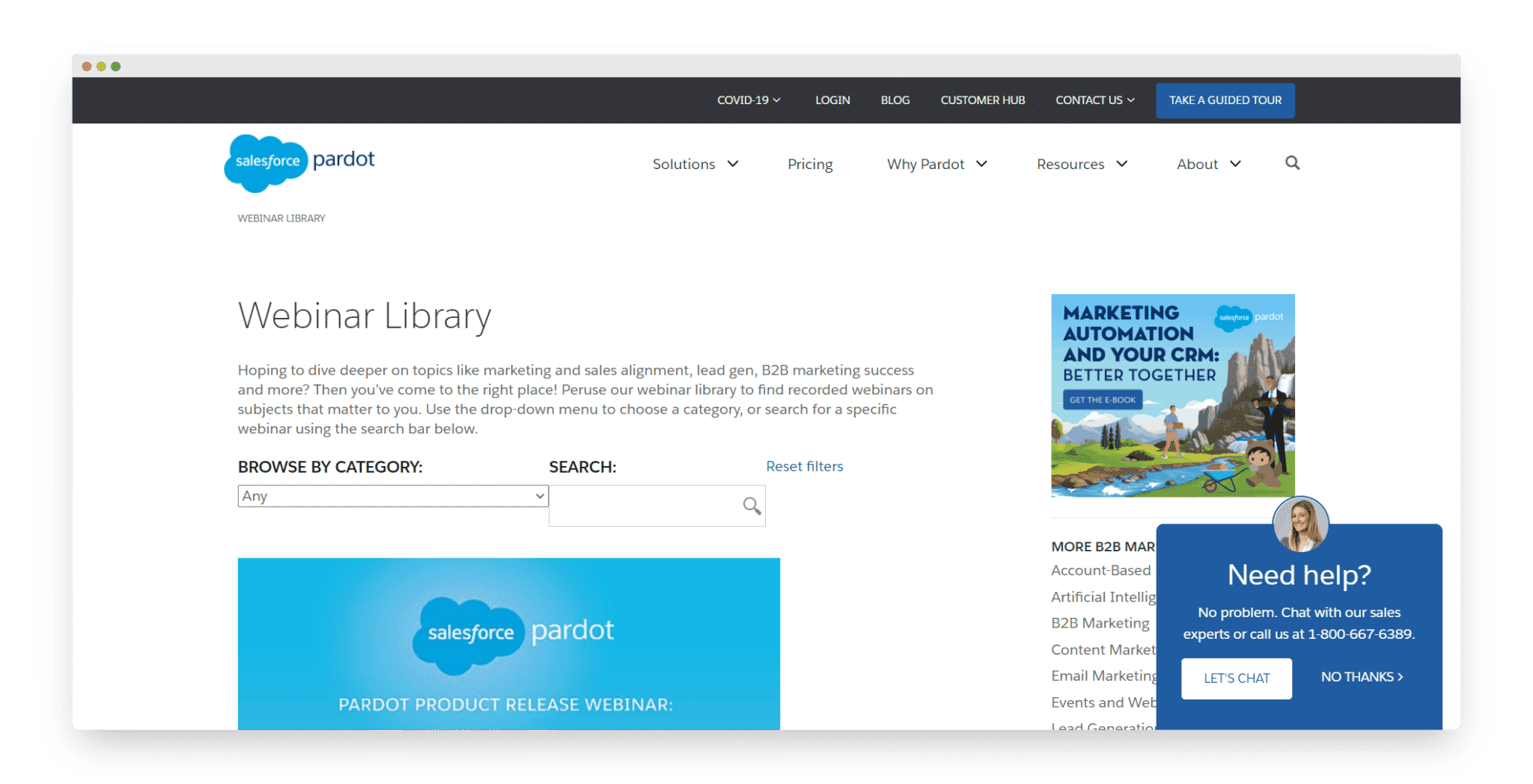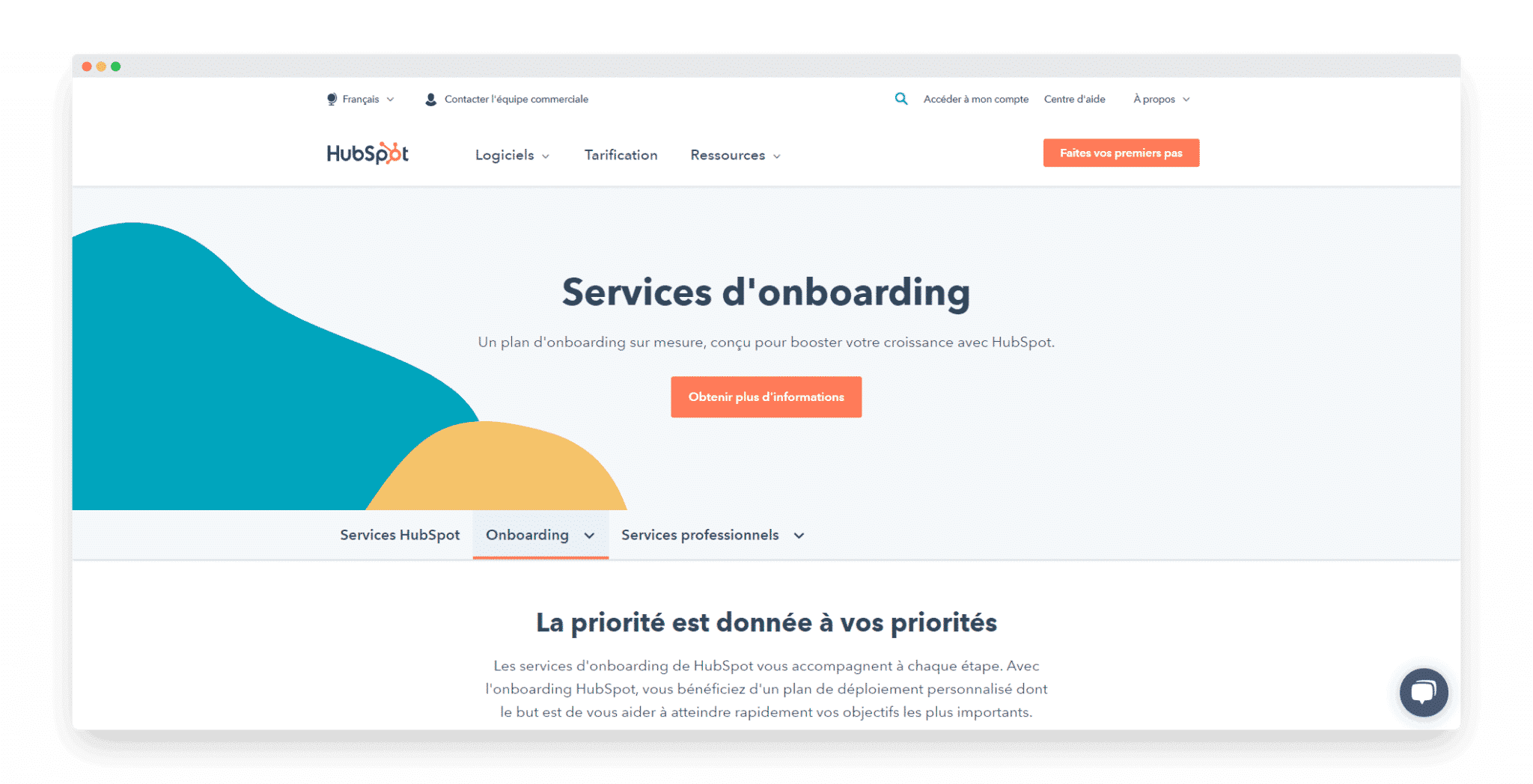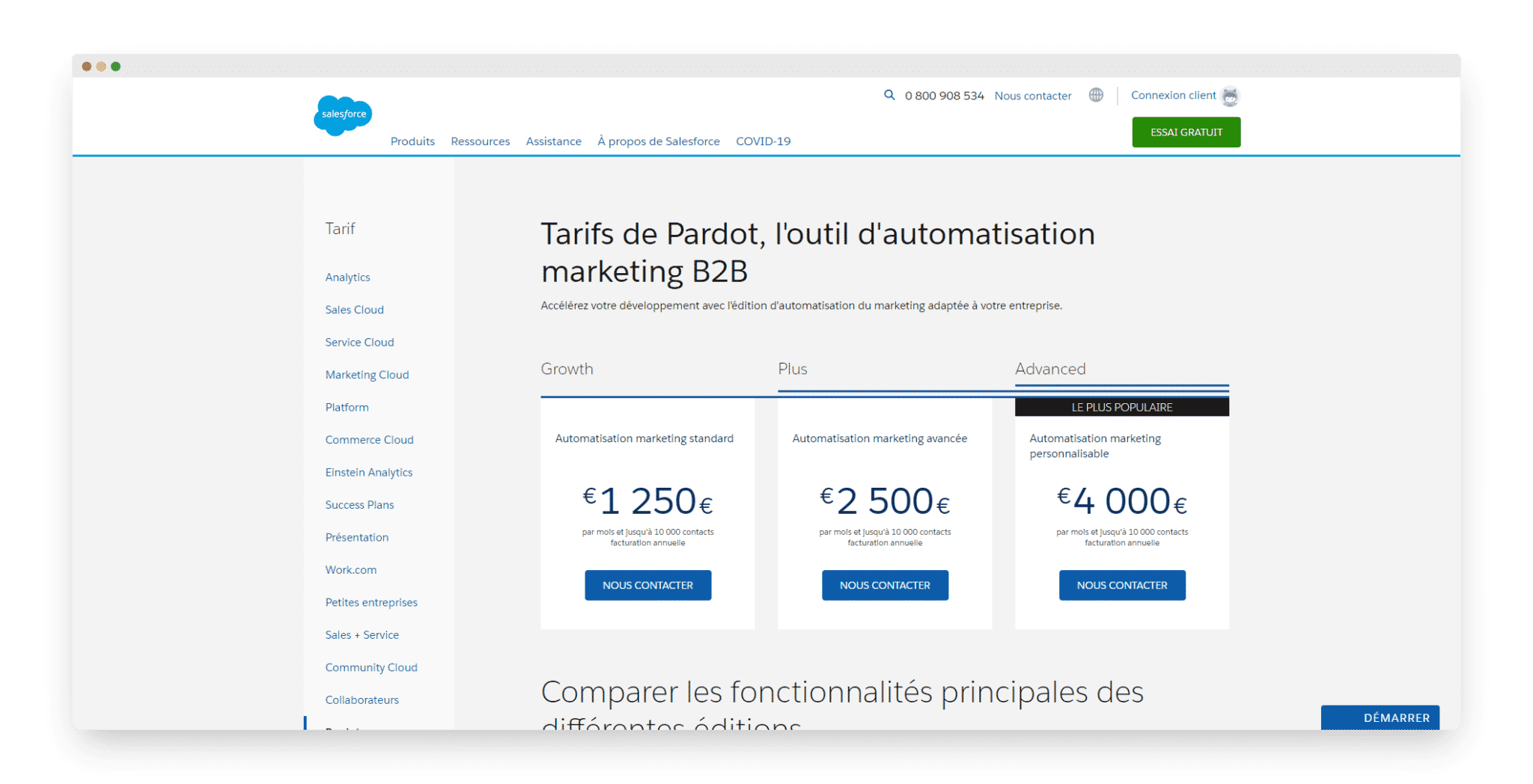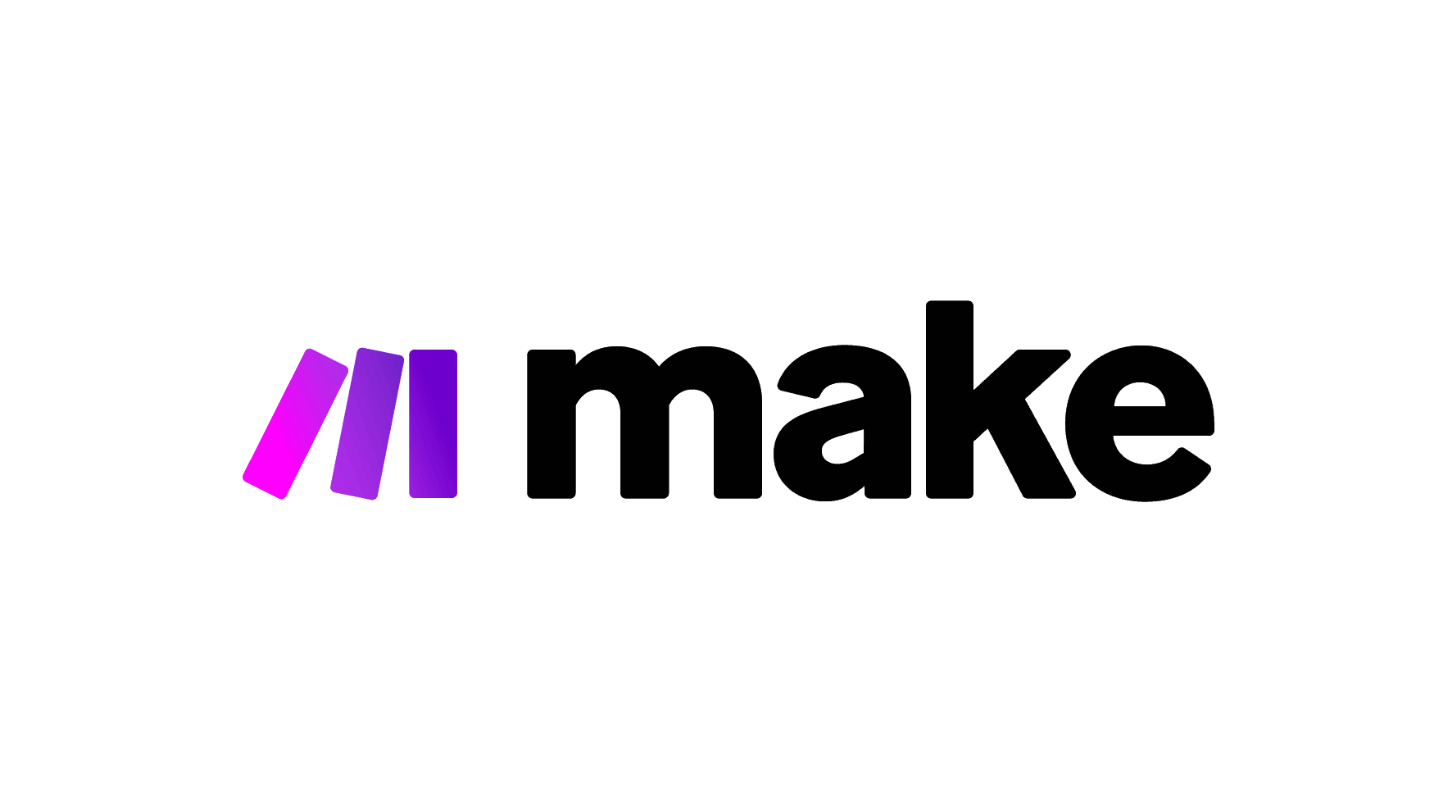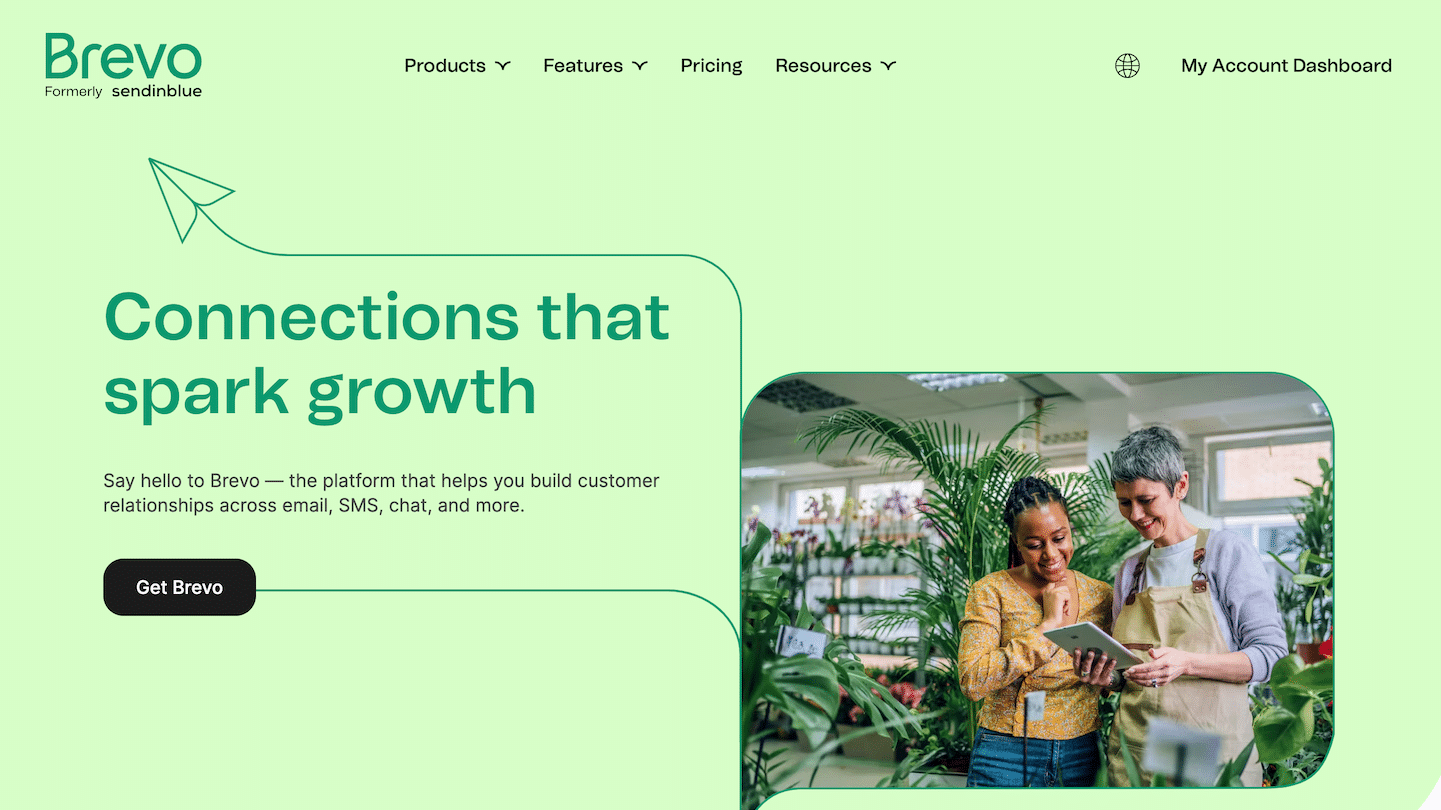In this article, we introduce you to two CRM & marketing automation software giants:
- Hubspot Marketing Hub, to be integrated with Hubspot CRM
- and Pardot, to be integrated with the inevitable Salesforce
In short, Pardot brings a clear advantage in terms of lead management & reporting, where Hubspot will better integrate with all your existing tools with a significantly shorter learning curve.
More details in the article 👇
Sommaire
#1 Functional scope
Content marketing & lead generation
Do you want to fully engage in content marketing or lead generation campaigns? Hubspot is the right tool for you! As a leader ininbound marketing, this is only natural.
Email marketing, landingpages, form management, A/B testing etc. you will have access to a whole range of very useful Inbound features thanks to this all-in-one tool.
On the Pardot side, the functionalities are there: email creation tool, landing pages, workflow creation etc. But, the major difference with Hubspot is that the experience and customization is quite limited.
Advantage: Hubspot
As the leading tool in Inbound Marketing and thanks to its functional depth, Hubspot wins quite clearly.
Lead management
Hubspot has a very effective lead scoring feature. It comes with predictive scoring software with the Marketing Hub business plan.
Do you want to target prospects based on their behavior? Visited pages, opened e-mails etc. It’s all possible with Hubspot.
You can also set up drip campaigns to send them relevant messages based on actions taken.
Pardot also has an advanced lead scoring feature, named Einstein, which is powered by AI. A score is given to all prospects who have had activity in the last 12 months.
Pardot then gives you the possibility to group your prospects according to the scores.
In terms of segmentation, Pardot offers great flexibility. You can create lists based on the stage the prospect is in, segment prospects based on their interest, etc.
Drawing match
Each of these tools meets slightly different needs. Segmentation & scoring are more efficient with Pardot. On the other hand, dynamic content and marketing automation are easier to implement on Hubspot.
#2 Reporting
Reporting
You naturally want to track data related to your traffic, conversions, most popular blog posts etc. all these metrics are available in one place: the Hubspot dashboard.
With the Starter plan, only 1 dashboard is available. Up to 25 dashboards can be created from the Enterprise Plan.
Hubspot dashboards then generate impressive reports. You can even generate reports according to a specific schedule (daily, weekly or monthly).
These reports can be easily customized using, for example, some of the templates in the Hubspot library. You will quickly realize that there are better alternatives to Hubspot on this particular point.
At Pardot, the dashboards are impressive. By subscribing to the Plus or Advanced plan, you get 5 analytics dashboards directly: Account-Based Marketing, Engagement, Marketing Manager, Multi-Touch Attribution and Pipeline.
Note that these analysis tables are fully customizable according to the data you wish to track and analyze. Once you have customized your dashboard, you can start generating reports.
At Pardot, a dozen reports are available that provide detailed metrics you can use to evaluate every aspect of your marketing efforts.
With B2B Marketing Analytics, you can also customize your reports in every way imaginable using countless metrics.
Advantage: Pardot
Impressive dashboards, infinitely customizable reporting, Pardot wins on this topic.
#3 Integrations
Commercial CRM side
Hubspot CRM provides free tools to your teams in order to simplify your daily work.
Pardot is the B2B marketing automation tool from the Salesforce suite. The integration with Salesforce is very successful: deep and powerful. But in order to value CRM integrations, you also need to value the multiplicity of integrations, and on this point, Pardot is clearly very limited.
Advantage: Hubspot
To get maximum value from Hubspot, use Hubspot CRM. But, the Marketing Automation suite will also be able to work with the big CRMs of the market like Pipedrive or Zoho.
Content Management System (CMS) side
If you don’t have a defined content marketing process, with Hubspot, no problem. Indeed, the tool offers its own CRM to host your blog posts, for example.
Hubspot also offers many plugins, like WordPress for example, to make your job easier.
Pardot’s tool integrates with almost all websites on the market. On the other hand, this implies a rather tedious technical integration.
Advantage: Hubspot
Hubspot is clearly more focused on content marketing and online marketing. In addition, it is much easier to use.
Other integrations
Integrations allow you to connect your HubSpot or Pardot platform to other software solutions. The more integration capabilities, the better.
HubSpot has many more integration capabilities than Pardot. In 2020, HubSpot boasts integration capabilities with 459 different tools.
Although Pardot has native integration with Salesforce, there are only 32 integrations available with third-party applications.
Pardot offers some interesting integrations available on all of its plans, including EventBrite integration, integration with webinar software or integration with the live chat software for generating B2B leads, Olark.
Another powerful integration is with Google Adwords. Available on the Plus and Advanced plans, you have the possibility to create landing pages corresponding to the keywords on which you want to position yourself via an Adwords campaign.
All the interactions of your prospects with your Adwords campaigns are integrated into the global tracking. This way, you can optimize your campaigns based on the results.
Advantage: Hubspot
If you look at the raw numbers, HubSpot simply offers more integration options. However, it is important to note that HubSpot can integrate with Salesforce and vice versa.
#4 Support & customer reviews
What customers say
What are the opinions of Hubspot? What do you think of Pardot? Which of these two programs is favored by its customers?
Based on the major online review sites, Hubspot has an average rating of 4.5/5. It is the support and the global customer service that often comes up as a strong point.
It is also its functional depth and its marketing automation capabilities that are highlighted. Hubspot is definitely among the top 10 marketing automation solutions for TPES & PMES.
Customer reviews for Pardot, while very good, are a bit lower than Hubspot. The average rating of 4.1/5 attests to this.
The negative points that come up the most are the complexity of using the system and the training and other tools available that are too confusing to use for a beginner.
Advantage: Hubspot
According to users, Hubspot is the winner. But beware of platform bias!
Resources & support
With Hubspot, in order to access live chat, phone or email support 24/7, you have to pay. It’s a good investment because the Hubspot support team is very efficient.
Most of the time, they offer to help you solve your problem live, by chat or phone.
Users can also interact with other users in the forum or learn how other HubSpot customers are using the platform through blog posts.
In addition, HubSpot has a comprehensive resource center, the HubSpot Academy, where users can take courses, including video training, and earn certifications.
As for Pardot, it provides users with continuous technical support by e-mail. Regarding phone support, it is only available for premium customers, unless you have critical issues.
Critical” problems are problems that affect all of your users and may include data integrity problems or complete system downtime.
On the resources side, all Pardot users have unlimited access to the knowledge base. It provides a lot of useful tips and information on how to use Pardot’s features.
There are also many user groups where you can ask for help, exchange ideas, or submit new product features.
Finally, Pardot also has a Customer Hub where you can ask questions, interact with users, experts and partners, take learning modules, watch videos and webinars, check out previous issues, etc.
Advantage: Hubspot
Courses, video training, forums etc. Hubspot makes every effort to ensure that every user can use the full capabilities of the platform.
Onboarding & learning curve
Pardot offers a quick start package in which a dedicated manager will work with your team to help you configure the Pardot system to your company’s specifications.
Pardot also provides access to free weekly live training sessions, including webinars on specific features.
As for HubSpot, full training and onboarding is available – for a price. Four plans are available at different price levels.
The most basic plan, the Starter plan, includes training to understand the data collected in HubSpot, assistance with lead capture and conversion paths, segmentation of your data and email marketing.
For onboarding and training on content strategy, analytics, campaign configuration, data migration, technical guidance and more, you will need to invest in a more advanced onboarding plan.
Advantage: Hubspot
Once again, Hubspot wins. Full support is available for each of the software’s features.
#5 Quality-price ratio
HubSpot software offers 3 different pricing plans. The price is based on a monthly cost, although an annual subscription is required. It should also be noted that the prices listed are based on the number of contacts, 1,000, that your account must not exceed.
Once this limit is exceeded, the subscription cost will increase by $50 per month for each additional 1,000 contacts.
Salesdorado’s advice
Before committing to any of the plans Hubspot offers, consider negotiating the number of contacts. Very often, Hubspot offers a much better rate than the famous $50 extra for 1000 contacts. Think about it!
With that in mind, here are the three plans offered by HubSpot (all of which come with the free HubSpot CRM):
- Hubspot Starter: includes 1,000 contacts and costs €41/month, or €497/year.
- Hubspot Professional – includes 1,000 contacts and all the features of the Starter plan plus marketing automation, ABM tools, A/B testing etc. still at 740€/ month, or 8,880€/ year.
- Hubspot Enterprise – includes 10,000 contacts and all the features of the Professional plan, plus advanced reporting, programmable chatbots and more. This plan costs 2 944€/ month, or 35 328€/ year.
Pardot’s plans, also 3 in number, are established in a similar way to HubSpot. However, unlike HubSpot, Pardot includes 10,000 contacts in its overall plans. Here is a brief summary of Pardot’s pricing plans:
- Growth Plan at a rate of 1250€/ month. According to Pardot, it’s perfect for “Fueling growth through smarter Marketing Automation.”
- Plus Plan at a rate of €2,500 per month. According to Pardot, this is the ideal package to “Dive deeper into marketing automation and analytics.
- Advanced Plan at a rate of €4,000 per month. According to Pardot, this is the package that “Drives innovation through artificial intelligence and analytics.”
Equality
Hubspot is very advantageous at the beginning (high entry price on Pardot) and becomes quite advantageous at a very large scale because of the significantly greater functional depth & quality of support that allows to go further. But, beware! Hubspot is expensive and brings less overall than Pardot which is a very advanced tool in terms of reporting, attribution or lead management
The choice of platform between Pardot and Hubspot is closely linked to the choice of your CRM software. To help you decide, we recommend you read our article Hubspot VS Salesforce as well as our complete CRM software comparison.

